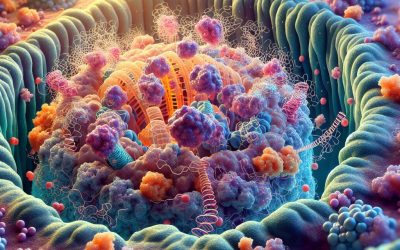Explore the World Through Geography, Natural Resources & Daily History
Clear, reliable and engaging guides that help you understand our planet — from UK geography education to global natural resources and On This Day history events.
Explore, discover, and learn about the wonders of our world! At Earth Site, we’re passionate about bringing geography, history, and science to life for curious minds of all ages. Whether you’re delving into historical events, uncovering the mysteries of the natural world, or seeking interactive resources, you’re in the right place.
Here, you can uncover the stories behind historical events, explore the natural wonders of our planet, and gain valuable insights into how the Earth’s systems shape our daily lives. From the towering peaks of mountain ranges to the far-reaching impacts of human innovation, we aim to make every topic both engaging and informative.
Start your journey of discovery with us today, and let’s make learning an adventure!
What We Cover
Earth Site brings together engaging and accessible educational content designed to help you understand the world, its history, and its natural systems.
🌍 Geography Education (UK & Worldwide)
We publish clear, easy-to-understand geography resources for students, teachers and curious learners. Our guides support geography education in the UK and cover physical geography, climate, ecosystems, population, and global development.
⛏️ Natural Resources & Environmental Geography
Explore detailed country profiles covering natural resources, mining, energy, geology and global environmental challenges. We show how nations manage minerals, water, land and ecosystems, and why these resources matter.
📅 On This Day in History
Every day has a story. Our On This Day history series features major events, anniversaries, traditions, and cultural milestones from around the world — with timelines, context, and fun facts.
TIMELINE
Exploring the Fascinating World of Cells: An Overview of the Different Types
Cells are the basic building blocks of life. They are the smallest unit of life that can replicate independently, and they are found in all living organisms. Cells are incredibly important because they carry out all the necessary functions for an organism to survive and thrive. They are responsible for processes such as growth, reproduction, and metabolism. Without cells, life as we know it would not exist. Key Takeaways Cells are the basic unit of life and are essential for all living organisms. Prokaryotic cells lack a nucleus and other membrane-bound organelles, while eukaryotic cells have these structures. Cells are made up of various organelles that perform specific functions, such as the mitochondria for energy production. There are many different types of cells in the human body, including blood cells, bone cells, and nerve cells. Cells can contribute to disease, but research on cells is also revolutionizing healthcare and medicine. Understanding the Different Types of Cells: Prokaryotic vs Eukaryotic Cells There are two main types of cells: prokaryotic and eukaryotic cells. Prokaryotic cells are simpler in structure and do not have a nucleus or membrane-bound organelles. They are typically found in bacteria and archaea. On the other hand, eukaryotic cells are more complex and have a nucleus and membrane-bound organelles. They are found in plants, animals, fungi, and protists. The main difference between prokaryotic and eukaryotic cells lies in their structure and organization. Prokaryotic cells have a single circular chromosome, while eukaryotic cells have multiple linear chromosomes. Prokaryotic cells also lack membrane-bound organelles such as mitochondria, endoplasmic reticulum, and Golgi apparatus, which are present in eukaryotic cells. The Building...
Exploring the Evolution of Chemical Education: A Historical Perspective
Chemical education has a rich history that dates back centuries. From the early alchemists to the modern chemists of today, the field has evolved and grown, playing a crucial role in society. Chemical education encompasses the teaching and learning of chemistry, providing individuals with the knowledge and skills needed to understand and apply chemical principles in various contexts. Chemistry is a fundamental science that underpins many aspects of our daily lives, from the food we eat to the medicines we take. It is essential for technological advancements, environmental sustainability, and addressing global challenges such as climate change. Therefore, chemical education is vital in equipping individuals with the necessary tools to contribute to society and make informed decisions. Summary Chemical education emerged in the early modern period. Chemical laboratories and professionalization of teaching rose. The industrial revolution had a significant impact on chemical education. Women’s role in chemical education evolved from marginalization to empowerment. Chemical education evolved in colonial and post-colonial contexts. The Emergence of Chemical Education in the Early Modern Period The roots of chemical education can be traced back to the early modern period when alchemy was prevalent. Alchemy, although often associated with mystical practices, laid the foundation for modern chemistry. Alchemists sought to transform substances through various experiments and observations, paving the way for the scientific method. During this period, notable chemists such as Robert Boyle and Antoine Lavoisier made significant contributions to chemical education. Boyle’s work on the behavior of gases and his publication “The Sceptical Chymist” challenged traditional alchemical beliefs and emphasized the importance of experimentation and observation in understanding chemical phenomena. Lavoisier, known as...
The Fascinating World of Theoretical Chemistry: Exploring the Theories and Applications
Theoretical chemistry is a branch of chemistry that uses mathematical and computational methods to understand and predict the behavior of molecules and atoms. It plays a crucial role in various fields such as material science, drug discovery, environmental science, chemical engineering, astrochemistry, and understanding biological systems. Theoretical chemistry provides insights into the fundamental principles that govern chemical reactions and interactions, allowing scientists to design new materials, develop new drugs, and understand complex biological processes. Summary Theoretical chemistry is the study of molecules and atoms, and their interactions with each other. Quantum mechanics is a key concept in theoretical chemistry, helping to explain the behaviour of atoms and molecules. Computational methods play a crucial role in theoretical chemistry, allowing scientists to model and predict chemical reactions. Theoretical chemistry has many applications, including in material science, drug discovery, environmental science, chemical engineering, and astrochemistry. The future of theoretical chemistry is bright, with emerging trends and challenges such as the development of new computational methods and the exploration of complex biological systems. Theoretical Chemistry: An Introduction to the World of Molecules and Atoms Theoretical chemistry can be defined as the branch of chemistry that uses mathematical models and computational methods to study the properties and behavior of molecules and atoms. It combines principles from physics, mathematics, and computer science to develop theoretical models that can explain and predict chemical phenomena. The field of theoretical chemistry has a rich historical background, with key contributions from scientists such as Erwin Schrödinger, Linus Pauling, and Robert Mulliken. The scope of theoretical chemistry is vast, ranging from the study of simple molecules to complex biological systems....
The Fascinating World of Nuclear Chemistry: Uncovering the Science Behind Nuclear Reactions
Nuclear chemistry is a branch of chemistry that deals with the study of atomic nuclei and the changes they undergo. At its core, nuclear chemistry is concerned with understanding the structure of an atom and the interactions between its constituent particles. An atom consists of a nucleus, which is made up of protons and neutrons, surrounded by electrons. Protons have a positive charge, neutrons have no charge, and electrons have a negative charge. The number of protons in an atom determines its atomic number, while the total number of protons and neutrons determines its atomic mass. The nucleus is held together by the strong nuclear force, which is much stronger than the electromagnetic force that repels positively charged protons. The electrons orbit the nucleus in energy levels or shells, and their arrangement determines the chemical properties of an element. Summary Nuclear chemistry is the study of atomic structure and the reactions that occur within the nucleus. Marie Curie was a pioneer in the field of nuclear chemistry, and today’s scientists continue to make advancements in the field. There are three types of nuclear reactions: fission, fusion, and radioactive decay. Nuclear energy has both pros and cons, including its potential for clean energy and the risk of accidents and nuclear waste. Radioisotopes are used in medical diagnostics and treatment, but there are also ethical considerations surrounding their use. The History of Nuclear Chemistry: From Marie Curie to Today’s Nuclear Scientists Marie Curie is often regarded as the mother of nuclear chemistry. She was a Polish-born physicist and chemist who conducted groundbreaking research on radioactivity in the late 19th and early...
The Fascinating World of Polymers: Exploring the Versatility and Applications of these Incredible Materials
Polymers are an essential part of our everyday lives, yet many people may not fully understand what they are or the impact they have on various industries. In simple terms, polymers are large molecules made up of repeating subunits called monomers. These molecules have unique properties that make them incredibly versatile and useful in a wide range of applications. In this article, we will explore the fascinating world of polymers, from their definition and properties to their applications in industries such as manufacturing, medicine, and even art. We will also discuss the future of polymer science and technology, as well as the environmental challenges associated with polymer waste. Summary Polymers are fascinating because of their unique properties and versatility. Polymer materials have a wide range of applications, from plastics to rubber and beyond. Polymer chemistry involves understanding the process of polymerization. Polymers play a crucial role in modern manufacturing and industry, as well as in medicine and healthcare. The future of polymers is full of advancements and emerging technologies, but also poses environmental challenges that need to be addressed. What are Polymers and Why are They So Fascinating? Polymers can be defined as large molecules made up of repeating subunits called monomers. These monomers are chemically bonded together to form long chains or networks, resulting in the formation of a polymer. The unique properties of polymers arise from the arrangement and bonding of these monomers. One of the most fascinating aspects of polymers is their versatility. They can be found in a wide range of materials, from plastics and rubber to fibers and films. Polymers can be rigid or...
Breathing Easy: The Importance of Air and Water Quality in the UK
Air and water quality play a crucial role in maintaining human health. The quality of the air we breathe and the water we consume can have a significant impact on our overall well-being. Poor air and water quality can lead to a range of health problems, including respiratory issues, cardiovascular disease, and gastrointestinal illnesses. In this blog post, we will explore the state of air and water quality in the UK, discuss the health risks associated with poor quality, and provide tips on how to protect ourselves and our communities. The purpose of this blog post is to raise awareness about the importance of air and water quality on human health and to provide practical information on how individuals and communities can take steps to improve these conditions. By understanding the sources of air and water pollution, as well as the health risks associated with them, we can make informed decisions to protect ourselves and our loved ones. Summary Air and water quality have a significant impact on our health. The UK has poor air quality, which can lead to respiratory and cardiovascular problems. Contaminated drinking water poses health risks, and treatment and purification are crucial. Environmental regulations play a vital role in improving air and water quality. We can all take steps to improve air and water quality in our communities. The State of Air Quality in the UK: An Overview Air pollution is a significant issue in the UK, with many areas exceeding the legal limits set by the European Union. According to a report by the Royal College of Physicians and the Royal College of Paediatrics...
Exploring the Power of Instrumental Methods: A Journey through Chromatography and Spectroscopy
Instrumental methods in chemical analysis refer to a set of techniques that utilize various instruments and devices to determine the composition, structure, and properties of chemical substances. These methods have revolutionized the field of analytical chemistry by providing accurate and precise measurements, as well as enabling the analysis of complex samples. The importance of instrumental methods in chemical analysis cannot be overstated, as they have significantly improved the efficiency and reliability of chemical analysis in various industries. Summary Instrumental methods are essential in chemical analysis Chromatography is a powerful technique for separating and identifying compounds Different types of chromatography have specific applications in various industries Spectroscopy is a valuable tool for identifying and quantifying compounds Advancements in chromatography and spectroscopy have improved their accuracy and efficiency Understanding the Fundamentals of Chromatography Chromatography is a widely used technique in instrumental methods of chemical analysis. It is based on the principle of separation of components in a mixture by their differential migration through a stationary phase and a mobile phase. The stationary phase can be a solid or a liquid, while the mobile phase is typically a liquid or a gas. The separation is achieved based on the differences in the distribution coefficients or affinities of the components for the stationary and mobile phases. There are several types of chromatography techniques, including gas chromatography (GC), liquid chromatography (LC), ion exchange chromatography, and affinity chromatography. Gas chromatography is used for the separation and analysis of volatile compounds, while liquid chromatography is used for non-volatile compounds. Ion exchange chromatography separates ions based on their charge, while affinity chromatography separates molecules based on their...
Unravelling the Mysterious World of Quantum Mechanics: A British Perspective
Quantum mechanics is a branch of physics that deals with the behavior of matter and energy at the smallest scales. It is a fundamental theory that has revolutionized our understanding of the physical world and has led to numerous technological advancements. In this article, we will explore the origins of quantum mechanics, the key concepts and principles that underpin it, and its implications for our understanding of reality. We will also discuss the potential applications of quantum technologies and the challenges and opportunities that lie ahead in this exciting field. Summary Quantum mechanics originated in the early 20th century, with contributions from scientists such as Planck, Einstein, and Bohr. The wave-particle duality is a fundamental concept in quantum mechanics, describing how particles can exhibit both wave-like and particle-like behavior. The uncertainty principle states that there are limits to how precisely we can measure certain properties of particles, such as their position and momentum. Quantum entanglement is a phenomenon where particles can become correlated in such a way that their properties are linked, even when separated by large distances. The Schrödinger equation is a mathematical framework that describes how quantum systems evolve over time, and is a key tool in quantum mechanics research. The Origins of Quantum Mechanics: A Brief History The development of quantum mechanics can be traced back to the early discoveries in atomic and subatomic physics in the late 19th and early 20th centuries. Scientists such as Max Planck, Albert Einstein, and Niels Bohr made groundbreaking contributions to our understanding of the behavior of particles at the atomic level. Planck’s discovery of quantized energy levels in blackbody...
Unlocking the Secrets of Organic Chemistry: A Journey Through the Molecules of Life
Organic chemistry is the branch of chemistry that deals with the study of carbon-based compounds and their properties, structure, composition, reactions, and synthesis. It is a fundamental discipline in understanding the building blocks of life. Carbon is unique in its ability to form a wide variety of compounds due to its ability to form strong covalent bonds with other elements, including itself. This versatility allows carbon to form the complex molecules that are essential for life. Understanding organic chemistry is crucial in comprehending the processes that occur within living organisms. Organic compounds such as carbohydrates, proteins, lipids, and nucleic acids are the foundation of life and play vital roles in biological processes. These molecules are involved in energy storage, structural support, cell communication, and genetic information transfer. Without a thorough understanding of organic chemistry, it would be impossible to comprehend the intricate mechanisms that drive life. Summary Organic chemistry is the study of carbon-based compounds and their properties. Organic molecules such as carbohydrates, proteins, and lipids are essential building blocks of life. Organic chemistry plays a crucial role in medicine and drug discovery, as well as in agriculture and environmental science. Understanding the chemistry of DNA and gene expression is important for developing new treatments for genetic diseases. Advancements in organic chemistry are leading to new techniques and discoveries, but also present challenges and opportunities for the future. The Molecules of Life: From Carbohydrates to Proteins and Lipids Carbohydrates, proteins, and lipids are three essential classes of organic compounds that are crucial for life processes. Carbohydrates are sugars and starches that serve as a primary source of energy for...
Exploring the Fascinating World of Chemical Bonding: Understanding the Forces that Hold Atoms Together
Chemical bonding refers to the process by which atoms are held together to form compounds. It is the fundamental concept in chemistry that explains how different elements interact with each other to create new substances. Understanding chemical bonding is crucial in comprehending the behavior of matter, as it allows scientists to predict and explain the properties and reactions of various substances. Chemical bonding is important because it provides insights into the structure, properties, and behavior of different materials. By understanding how atoms bond together, scientists can determine the physical and chemical properties of compounds, such as their melting points, boiling points, solubilities, and reactivity. This knowledge is essential in fields such as materials science, pharmaceuticals, and environmental science, where the understanding of chemical bonding helps in designing new materials, developing drugs, and studying chemical reactions. Key Takeaways Chemical bonding is the process by which atoms combine to form molecules and compounds. There are three types of chemical bonds: ionic, covalent, and metallic. Ionic bonding involves the transfer of electrons between atoms, while covalent bonding involves the sharing of electrons. Metallic bonding is unique to metals and involves a “sea” of electrons surrounding metal atoms. Electronegativity plays a crucial role in determining the type of bond that forms between atoms. The Three Types of Chemical Bonds: Ionic, Covalent, and Metallic There are three main types of chemical bonds: ionic bonds, covalent bonds, and metallic bonds. Each type of bond involves a different way in which atoms interact with each other. Ionic bonding occurs when one or more electrons are transferred from one atom to another. This results in the formation...
The Mighty Ribosomes: The Protein Factories of our Cells
Ribosomes are essential cellular structures that play a crucial role in protein synthesis. They are often referred to as the “protein factories” of our cells. Ribosomes are found in all living organisms, from bacteria to humans, and are responsible for translating the genetic information stored in DNA into functional proteins. Without ribosomes, life as we know it would not be possible. Key Takeaways Ribosomes are the protein factories of our cells, responsible for synthesizing all the proteins needed for life. Ribosomes are complex molecular machines made up of RNA and proteins, with a large and small subunit that work together to read and translate genetic information. Ribosome assembly is a complex process that involves many different proteins and RNA molecules, and can be disrupted by mutations or environmental stressors. Ribosomes play a crucial role in protein synthesis, ensuring that the correct amino acids are added to the growing protein chain in the correct order. Ribosomes work together with genes to regulate gene expression, and can be targeted by antibiotics to treat bacterial infections. The Structure of Ribosomes: A Molecular Machine Ribosomes are complex molecular machines composed of both RNA and proteins. They consist of two subunits, a large subunit and a small subunit, which come together during protein synthesis. The large subunit is responsible for catalyzing the formation of peptide bonds between amino acids, while the small subunit helps to position the mRNA and tRNA molecules during translation. The structure of ribosomes is highly conserved across all organisms, indicating its importance in cellular processes. The core of the ribosome is made up of ribosomal RNA (rRNA), which forms a...
Unleashing the Power of Calculus: How This Mathematical Tool Can Transform Your Understanding of the World
Calculus is a branch of mathematics that deals with the study of change and motion. It is a powerful tool that allows us to understand and analyze complex phenomena in various fields such as science, engineering, economics, and more. Calculus is divided into two main branches: differential calculus, which focuses on rates of change and slopes, and integral calculus, which deals with area, volume, and accumulation. The importance of calculus cannot be overstated. It provides us with the necessary tools to model and analyze real-world problems that involve change and motion. Without calculus, many scientific and technological advancements would not have been possible. From understanding the laws of motion to predicting the behavior of financial markets, calculus plays a crucial role in advancing our knowledge and improving our lives. Key Takeaways Calculus is a branch of mathematics that deals with rates of change and accumulation. Calculus has a rich history that dates back to ancient Greece and has evolved over time. Calculus has numerous real-world applications, including in physics, engineering, economics, and more. The fundamental theorems of calculus help us understand the relationship between differentiation and integration. Limits and continuity are essential concepts in calculus and serve as the building blocks for more advanced topics. The Historical Development of Calculus: From Ancient Greece to Modern Times The development of calculus can be traced back to ancient Greece, where mathematicians such as Archimedes made significant contributions to the field. Archimedes was known for his work on finding the areas of curved shapes using a method similar to what we now call integration. However, it was not until the 17th century...











